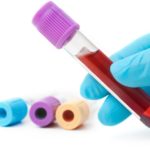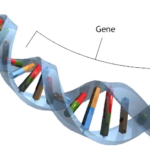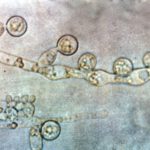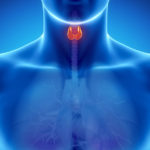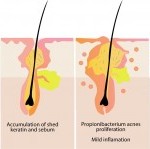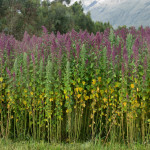Almost half of all women will experience a urinary tract infection (UTI) in their lifetime. The most common UTI is cystitis, an infection which develops in the lower urinary tract and affects the bladder and urethra. However, it can extend to the upper tract, where the ureters and kidneys are located and is then known as pyelonephritis 1. Symptoms include burning pain on urination; increased frequency of urination; foul smelling, or dark urine; bacteria, blood or pus in urine; and lower abdominal pain 2. Certain groups are at increased risk, such as pregnant women, infants, the elderly, diabetics, or patients using urinary catheters and adult women are significantly more likely to experience UTI than men 3.
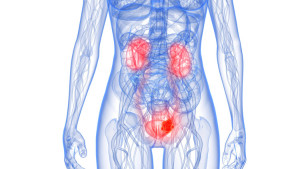 Escherichia coli (E coli), one of the first bacteria to colonise in the human gut after birth, 4 is the predominant bacteria associated with UTI in adult women, while Enterobacteriacaea are more typically found in children experiencing a bladder infection 5. The main risk factor for UTI is sexual activity 6, but pregnancy also increases the risk, as well as structural abnormalities of the urinary tract. Urine, which is excreted by the kidneys, is sterile until it reaches the uretha. Problems arise when bacteria from faeces or vaginal secretions travel up the urethra and colonise in the bladder, or further up the urinary tract. The inner surface of the bladder has antimicrobial properties and the pH of urine usually inhibits the growth of many bacteria, but it is important to minimise the risk of bacterial contamination, by completely emptying the bladder when urinating; wiping from front to back after using the toilet; by urinating before and after sexual intercourse; and avoiding sex while being treated for a UTI 2.
Escherichia coli (E coli), one of the first bacteria to colonise in the human gut after birth, 4 is the predominant bacteria associated with UTI in adult women, while Enterobacteriacaea are more typically found in children experiencing a bladder infection 5. The main risk factor for UTI is sexual activity 6, but pregnancy also increases the risk, as well as structural abnormalities of the urinary tract. Urine, which is excreted by the kidneys, is sterile until it reaches the uretha. Problems arise when bacteria from faeces or vaginal secretions travel up the urethra and colonise in the bladder, or further up the urinary tract. The inner surface of the bladder has antimicrobial properties and the pH of urine usually inhibits the growth of many bacteria, but it is important to minimise the risk of bacterial contamination, by completely emptying the bladder when urinating; wiping from front to back after using the toilet; by urinating before and after sexual intercourse; and avoiding sex while being treated for a UTI 2.
Cranberry juice has been well researched in relation to UTI and many studies show that it can reduce the recurrence of infection in women who have experienced regular UTI 6, 7, 8 and can reduce the number of recurrences in children 9. Proanthocyanidins are compounds found in cranberries (and other berries such as blueberries), which prevent E. coli from sticking to the walls of the bladder and urinary tract. Adhesion to the mucosal layer of cells which line various cavities in the body, such as the bladder and intestines, is necessary for most bacteria to multiply and to trigger infection 9. The bladder is able to flush away bacteria which have not attached themselves and therefore, preventing the adherence of E. coli in particular, is of vital importance in preventing recurrent urinary health issues.
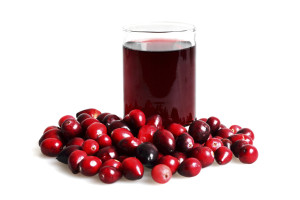 While unsweetened cranberry juice has been proved to be an effective preventative intervention, many studies report large numbers of participants dropping out of the experiments, which has been linked to the acceptability of consuming significant quantities of juice over time. Cranberry juice may also interact with certain medications, so it is advisable to seek medical advice before commencing any preventative programme for UTI. An alternative to drinking cranberry juice is to take a supplement of concentrated proanthocyanidins which are extracted from the fruit. If used consistently over time, such products have been shown to have a preventative effect, reducing the number of UTI recurrences 1.
While unsweetened cranberry juice has been proved to be an effective preventative intervention, many studies report large numbers of participants dropping out of the experiments, which has been linked to the acceptability of consuming significant quantities of juice over time. Cranberry juice may also interact with certain medications, so it is advisable to seek medical advice before commencing any preventative programme for UTI. An alternative to drinking cranberry juice is to take a supplement of concentrated proanthocyanidins which are extracted from the fruit. If used consistently over time, such products have been shown to have a preventative effect, reducing the number of UTI recurrences 1.
Another alternative is to take a supplement of D-mannose, which is suitable for both adults and children. D-mannose is a simple sugar, found in certain fruits (including cranberries, peaches, apples and oranges) and is found naturally in some cells of the body. It is similar to glucose, but is metabolised differently and absorbed more slowly, so doesn’t have the same impact on blood sugar and isn’t stored in the liver as glycogen. Experiments have shown that, like proanthocyanidins in cranberries, D-mannose prevents E. coli bacteria from adhering to the walls of the bladder 10 and a 2014 study indicated that it was equally as effective as the antibiotic Nitrofurantoin in reducing recurrence of UTI in women, but with significantly less side effects 11.
Similarly, probiotic therapy has been tested in long-term studies looking at preventing recurrence of UTI. Lactobacillus bacteria taken once a week in pessary form proved to be as effective as a variety of antibiotics taken daily for a year, in preventing recurrence of UTI, but without any side effects, compared to significant incidences of side effects reported by patients taking antibiotics 12.
When you consider the impact of antibiotics on the long-term health of the gut and the growing threat of antibiotic resistance, any natural alternative should certainly be considered as the starting point for treatment. For UTI caused by E. coli, D-mannose is a good option, which can often provide effective treatment without the use of antibiotics. Meanwhile, probiotics provide a way of maintaining ongoing healthy bacterial balance, as they compete with E.coli for adherence to the cells lining the gut and bladder 13. It is important to note that the safety of taking D-mannose in pregnancy has not been researched enough, while most probiotics are confirmed to be safe to use when pregnant.
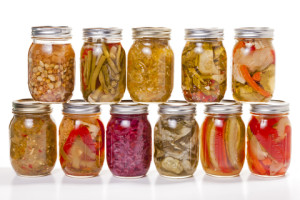
From a dietary perspective, any measures which support the healthy functioning of the digestive and immune system may be beneficial for the prevention of UTI. An American study 14 found that frequent consumption of fermented milk products was associated with low incidence of UTI recurrence, while no such association was found for fresh milk products. Indeed, consumption of a range of fermented food and drinks such as sauerkraut, kefir, kombucha, tempeh and yoghurt promotes the growth of beneficial gut bacteria, which play a vital role in developing and communicating with our immune system. Prebiotic foods such as onions, garlic (also known for its potent anti-bacterial properties), leek, chicory and asparagus, as well as resistant starch (found in cooked and cooled potatoes and rice, or in green bananas), provide fibre that beneficial bacteria ferment to produce energy, which further sustains both them and the cells lining the digestive tract 15.
Food allergies can cause inflammation in the urethra and bladder, making it harder to treat UTI, so it is important to identify and avoid foods such as gluten, which trigger inflammation in some individuals. Sugar inhibits the immune system and fuels potentially harmful bacteria, so a diet based on natural, unprocessed foods is advisable. Keeping properly hydrated ensures adequate urine flow to flush away bacteria, so it is recommended to drink at least 2 litres daily of water, herbal teas, vegetable juices and diluted, unsweetened fruit juices (pure, not concentrated). Avoid soft drinks, alcohol and caffeine, which act as diuretics.
View List of References
-
- Othman M (2013) Cysticlean and Recurrent Urinary Tract Infection. Urology, 4 (4): WMC004203. [Online] WebmedCentral (www.webmedcentral.com).
- Pizzorno J E, Murray M T, Joiner-Bey H (2008) The Clinician’s Handbook of Natural Medicine, 2nd Ed., Churchill Livingstone, USA.
- Foxman B (2002) Epidemiology of urinary tract infections: incidence, morbidity, and economic costs. The American Journal of Medicine, 113 (1): 5-13. [Online – abstract only] Science Direct (www.sciencedirect.com).
- Kataoka K (2016) The intestinal microbiota and its role in human health and disease. The Journal of Medical Investigation, 63 (1-2): 27-37. [Online] Japan Science and Technology Information Aggregator Electronic (www.jstage.jst.go.jp).
- Ronald A (2002) The etiology of urinary tract infection: traditional and emerging pathogens. The American Journal of Medicine, 113 (1): 5-13. [Online] Science Direct (www.sciencedirect.com).
- Kontiokari T, Sundqvist K, Nuutinen M, Pokka T, Koskela M, Uhari M (2001) Randomised trial of cranberry-lingonberry juice and Lactobacillus GG drink for the prevention of urinary tract infections in women. British Medical Journal, 322: 1571. [Online] British Medical Journal (www.bmj.com).
- Avorn J, Monane M, Gurwitz J H, Glynn R J, Choodnovskiv I, Lipsitz L A (1994) Reduction of Bacteriuria and Pyuria After Ingestion of Cranberry Juice. Journal of the American Medical Association, 271 (10): 751-754. [Online – abstract only] Journal of the American Medical Association (www.jama.jamanetwork.com).
- Salo J, Uhari M, Hekminen M, Korppi M, Nieminen T, Pokka T, Kontiokari T (2012) Cranberry Juice for the Prevention of Recurrences of Urinary Tract Infections in Children: A Randomized Placebo-Controlled Trial. Journal of Clinical Infectious Diseases, 54 (3): 340-346. [Online] Oxford Journals Clinical Infectious Diseases (www.cid.oxfordjournals.org).
- Howell A B, Vorsa N, der Marderosian A, Foo L Y (1998) Inhibition of the Adherence of P-Fimbriated Escherichia coli to Uroepithelial-Cell Surfaces by Proanthocyanidin Extracts from Cranberries. New England Journal of Medicine, 339: 1085-1086. [Online] New England Journal of Medicine (www.www.nejm.org).
- Altarac S, Papes D (2014) Use of d-mannose in prophylaxis of recurrent urinary tract infections (UTIs) in women. British Journal of Urology International, 113 (1): 9-10. [Online – abstract only] Wiley Online Library (www.onlinelibrary.wiley.com).
- Kranjcec B, Papes D, Altarac S (2014) D-mannose powder for prophylaxis of recurrent urinary tract infections in women: a randomized clinical trial. World Journal of Urology, 32 (1): 79-84. [Online] PubMed (www.ncbi.nlm.nih.gov).
- Reid G, Jass J, Sebulsky M T, McCormick J K (2003) Potential Uses of Probiotics in Clinical Practice. Clinical Microbiology Reviews, 16 (4): 658-672. [Online] PubMed (www.ncbi.nlm.nih.gov).
- Sekirov I, Russell S L, Antunes C M, Finlay B B (2010) Gut Microbiota in Health and Disease. Physiological Reviews, 90 (3): 859-904. [Online] Physiological Reviews (www.physrev.physiology.org).
- Kontiokari T, Laitinen J, Jarvi L, Pokka T, Sundqvist K, Uhari M (2003) The American Journal of Clinical Nutrition, 77 (3): 600-604. [Online] The American Journal of Clinical Nutrition (www.ajcn.nutrition.org).
- Topping D L (1996) Short-chain fatty acids produced by intestinal bacteria. Asia Pacific Journal of Clinical Nutrition, 5 (1): 15-19. [Online] PubMed (www.ncbi.nlm.nih.gov).


